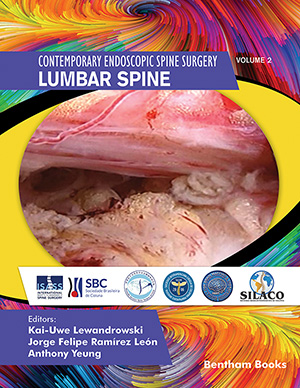Abstract
Foraminal stenosis is often underestimated due to difficulties in approaching
the region surgically. The evolution of the transforaminal approach allowed safe
surgical exploration of foraminal pathology under direct vision. Postoperative
Dysesthesia (POD) due to irritation of the dorsal root ganglion (DRG) of lumbar nerve
roots at the surgical level is a common sequela associated with the transforaminal
approach. Minimal dorsal root ganglion (DRG) retraction is critical to prevent POD.
Full endoscopic interlaminar contra-lateral lumbar foraminotomy consists of a
sublaminar approach or translaminar approach. It is followed by contralateral
foraminotomy and extraforaminal decompression. The contralateral approach's
principle is to create a safe path to the contralateral foramen, preserving the ipsilateral
anatomy. It allows simultaneous lateral recess, contra-lateral foramen, and
extraforaminal decompression along the nerve root with minimal nerve root
manipulation in the foramen. However, the learning curve for the technique is steep
compared to the transforaminal technique
Keywords: Dorsal root ganglion, Foraminal stenosis, Postoperative dysesthesia, Transforaminal approach






















